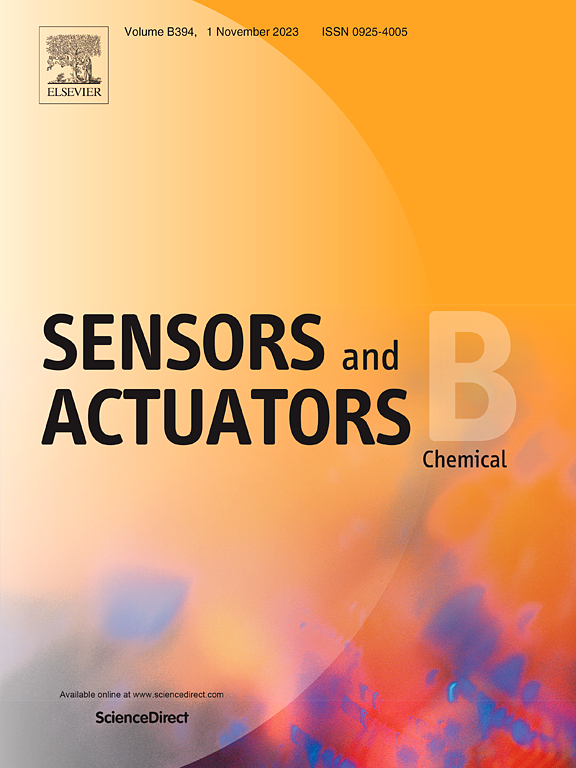A multipedal DNA walker with bidirectional walking mechanism for pesticide residue detection in food samples
IF 8
1区 化学
Q1 CHEMISTRY, ANALYTICAL
引用次数: 0
Abstract
Given the detrimental effects of pesticide residues on human health and the ecological environment, it is crucial to sensitively and quantitatively detect these chemicals in food and environmental samples. This study presents a novel multipedal DNA walker that employs a bidirectional walking mechanism for detecting pesticide residues. The walking system is composed of four essential components: a lantern probe (LP) for target recognition, two ingeniously designed hairpin structures facilitating a hybridization chain reaction (HCR), and a spherical nucleic acid probe (SNP). When a specific pesticide residue is present, the HCR process leads to the assembly of an HCR thread, which functions as the walking orbit alongside the SNP. The walker operates by utilizing the SNP as the DNA orbit, enabling continuous and automated movement along the SNP, which is driven by Eb.BbvCI. This process results in the fluorescence signals emitted from the SNP. Conversely, when the HCR thread is utilized as the orbit, movement transpires along the HCR thread, powered by Et.BbvCI, which generates fluorescence signals from the HCR thread. This bidirectional walking mechanism enhances signal amplification and accumulation, enabling ultra-sensitive detection of pesticides, achieving detection limits of 6.8 aM for acetamiprid and 5.2 aM for malathion. The quantification of acetamiprid residues in real food samples demonstrates the practical applicability of this walker. Therefore, this approach presents a novel walking mechanism for walker development and offers a highly sensitive methodology for detecting pesticide residues in food, showing significant potential in food safety assessment, environmental pollution monitoring, and public health protection.
一种具有双向行走机制的多足DNA行走器用于食品中农药残留检测
鉴于农药残留对人类健康和生态环境的有害影响,对食品和环境样品中农药残留的敏感和定量检测至关重要。本研究提出了一种新型的多足DNA行走器,采用双向行走机制检测农药残留。该行走系统由四个基本部件组成:用于目标识别的灯笼探针(LP)、用于杂交链反应(HCR)的两个巧妙设计的发夹结构和一个球形核酸探针(SNP)。当存在特定的农药残留时,HCR过程导致HCR线的组装,HCR线在SNP旁边起行走轨道的作用。助行器通过利用SNP作为DNA轨道进行操作,实现沿SNP连续和自动移动,该SNP由Eb.BbvCI驱动。这个过程导致从SNP发出荧光信号。相反,当HCR线程用作轨道时,运动沿着HCR线程进行,由Et.BbvCI提供动力,从HCR线程产生荧光信号。这种双向行走机制增强了信号的放大和积累,实现了农药的超灵敏检测,对啶虫脒和马拉硫磷的检出限分别达到6.8 aM和5.2 aM。对实际食品样品中啶虫脒残留的定量分析表明了该步行者的实用性。因此,该方法为学步器的发育提供了一种新的行走机制,并为食品中农药残留检测提供了一种高灵敏度的方法,在食品安全评价、环境污染监测和公共卫生保护方面具有重要的潜力。
本文章由计算机程序翻译,如有差异,请以英文原文为准。
求助全文
约1分钟内获得全文
求助全文
来源期刊

Sensors and Actuators B: Chemical
工程技术-电化学
CiteScore
14.60
自引率
11.90%
发文量
1776
审稿时长
3.2 months
期刊介绍:
Sensors & Actuators, B: Chemical is an international journal focused on the research and development of chemical transducers. It covers chemical sensors and biosensors, chemical actuators, and analytical microsystems. The journal is interdisciplinary, aiming to publish original works showcasing substantial advancements beyond the current state of the art in these fields, with practical applicability to solving meaningful analytical problems. Review articles are accepted by invitation from an Editor of the journal.
 求助内容:
求助内容: 应助结果提醒方式:
应助结果提醒方式:


